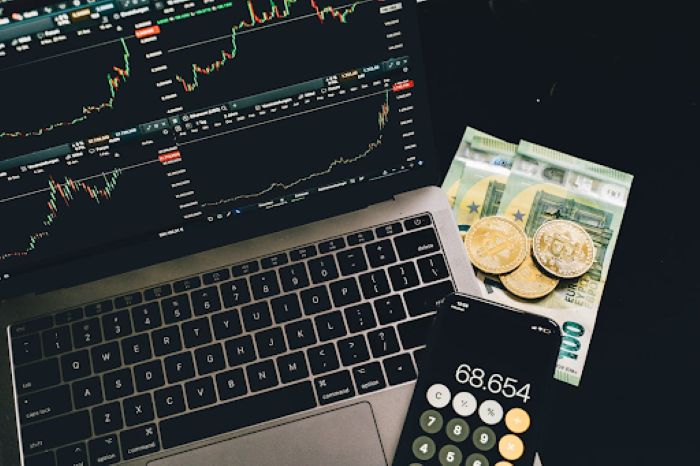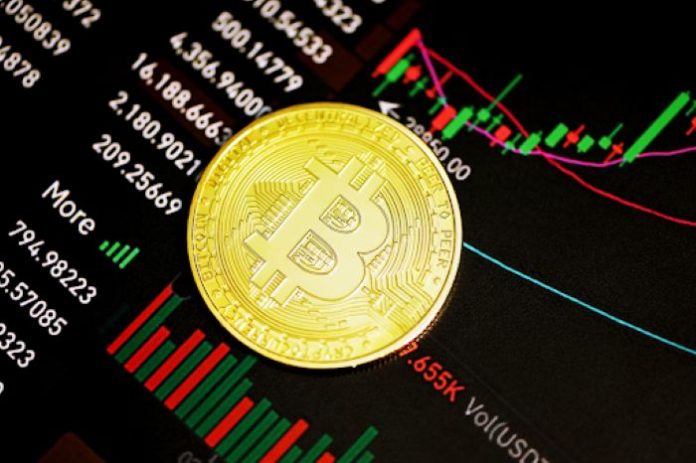The volatility index is a central point of investor sentiment, reflecting asset fluctuations over a specific period. In this brief overview, we will examine the Bitcoin Volatility Index and its potential for traders to generate supplemental income.
To keep abreast of the latest Bitcoin news, smart guidance, and techniques, visit btc news today.
Table of contents
Understanding Volatility Principles
The basic rule is quite straightforward: the larger the price fluctuations, the greater the financial unpredictability. Notably, the volatility index can be observed for any asset type, from stocks and gold to cryptocurrency. In short, volatility can be categorized as:
- Realized volatility. This type is measured on historical data.
- Expected volatility. It reflects possible price swings.
Among other well-known indicators, the CBOE VIX Index is mapped to assess the projected volatility of the U.S. securities market. On a global scale, this is one of the most recognized market indicators, used by most market participants and covered by the financial media.
Historical Background
In 1993, Cboe Global Markets initiated a state-of-the-art product for investors called the Cboe Volatility Index, or VIX. Initially, the tool was incorporated to indicate market sentiments over 30 days, with calculations based on options prices on the S&P 100 index (OEX).
Since 2003, Cboe has radically transformed the calculation methodology, using options on the S&P 500 index, which provides all-encompassing market coverage.
The VIX is continually referred to as “Wall Street’s fear gauge”. This index reflects the general mood of market participants and their presumptions regarding subsequent volatility.
The index value rising above or dropping below defined thresholds can be an indicator of calmness or the beginning of panic in the market. The simplest interpretation of VIX volatility levels is:
- Below 12 — Low;
- Above 20 — High;
- Between 12 and 20 — Normal.
The index reached maximum values during periods of severe crises accompanied by a stock market collapse. For the period from 2008 to 2023, outstanding peaks happened during the global financial crisis in 2008, 2009, and 2010, and the collapse in March 2020 related to the COVID pandemic.
Above all, a sharp surge in volatility leads traders to expect the trend to proceed and open deals in pursuit of making money for supplemental income on sharp price jumps. In turn, this further increases panic in the market and contributes to an even greater increase in volatility.
For instance, during the financial crisis of 2008, traders “collapsed” the Dow Jones index by more than 777 points, which was the largest drop in history.
For cryptocurrencies, which are volatile by nature, the indicator’s readings can be extremely useful.
What is the Bitcoin Volatility Index?
BVOL — Bitcoin Volatility Index — is monitored over various time intervals:
– BVOL24H: Daily volatility of Bitcoin;
– BVOL7D: Weekly volatility
For BVOL, there is the same division of volatility between realized volatility (historical) and expected volatility (implied). This tool encourages one to keep their finger on the pulse and promotes better understanding.
How to Estimate the Index
The volatility index serves as a derivative instrument and is calculated differently across various exchanges. Different trading platforms use their own cryptocurrency rates, liquidity, and time intervals.
It may be typical for some exchanges to apply the Bitcoin Daily Historical Volatility Index (BVOL24H) as the logarithmic percentage change in Bitcoin spot prices taken every minute.
On other platforms, the index is calculated based on BTC trading data on the options market with different termination dates.
BTC Volatility Index in Practice
Ultimately, the index value hinges on traders’ expectations. A high-level BVOL indicates that substantial price shifts are anticipated; a low-level BVOL suggests the stability on the market.
For the most part, the volatility of the digital asset market is driven by diverse factors:
- Supply and Demand. Increased trader interest in cryptocurrency transactions can lead to better volatility.
- Regulatory Control. The adoption of certain legislative initiatives can significantly affect market activity.
- Mining Costs. Fluctuations in the costs of mining digital assets are reflected in their value.
- News. The volatility of cryptocurrencies is strongly dependent on the information background.
Does the BVOL Index Affect the BTC Price?

The answer is YES, the BVOL and Bitcoin price are interconnected. That is to say, increased volatility often provokes noticeable price fluctuations.
If you observe the correlation between the volatility index and the Bitcoin price chart, you can see that the maximum values of BVOL most often correspond to the minimums on the BTC chart. This is because an erratic market evokes fear and concerns among investors. Conversely, the highest points on the price chart coincide with the minimums of the BVOL index, since a calmer predicted market leads to an increase in the instrument’s price.
A sharp price change, significantly exceeding the average values, allows you to make deals with a good profit. No matter how high the risks are associated with high market volatility, this is what allows traders to earn significant profits. Even on relatively calm days, Bitcoin can move more than $500.
The Volatility Index isn’t an investment instrument, but volatility can be swapped. Employing BVOL in trading comes down to options transactions. Cryptocurrency platforms where you can trade derivatives are suitable for this purpose.
Any type of trading demands a thorough understanding of the market. Well-structured tips from crypto news today can assist in predicting the market behavior and ongoing Bitcoin dynamics.
Conclusions
The BVOL Index can be an invaluable tool for generating supplemental income on the cryptocurrency market. By understanding volatility, you gain the opportunity to apply information for identifying potential risks and making a complicated task more manageable.
On the one hand, it’s essential to bear in mind that high volatility amplifies net supplemental income, but on the other hand, it dramatically increases the risks. Hence, it’s of utmost importance to maintain consistent learning by adhering to the preferred trading strategy, without succumbing to momentary emotional impulses.











